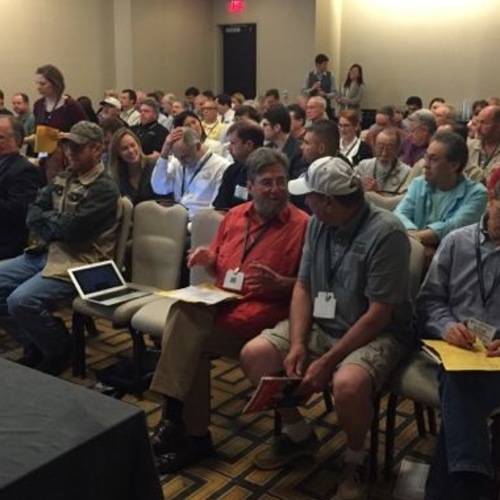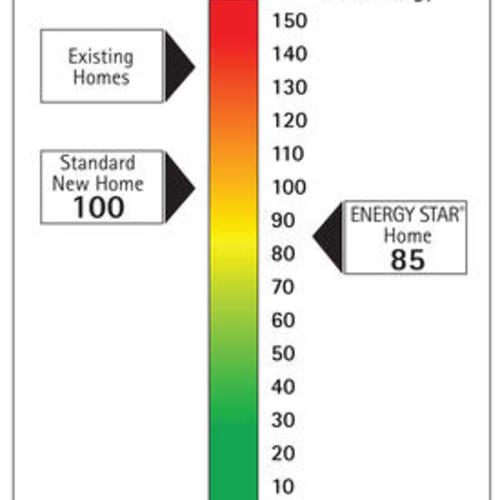
Image Credit: KB Home
The McMansion Era May Be Ending
WASHINGTON, DC — For the first time in at least ten years, the average size of new homes sold in the U.S. is shrinking. In the fourth quarter of 2008, the average new home measured 2,342 square feet — significantly less than in the second quarter of 2008, when new homes averaged 2,629 square feet.
Reporting on the trend, USA Today interviewed Gopal Ahluwalia, vice president of research for the National Association of Home Builders. “This will remain a trend. I don’t expect this (home size) to come back up,” said Ahluwalia. “We don’t need big homes. Family size has been declining for the past 35 years.” According to an NAHB survey, 9 out of 10 builders say they’re planning to build smaller, lower-priced homes than in the past.
A Novel Idea: A Home Is A Place To Live
USA Today also quoted Kermit Baker, chief economist of the American Institute of Architects, who said that plummeting home values “have caused many people to stop seeing houses as an investment but rather as a place to live.”
Recognizing the trend, home builder KB Home is selling tiny new 880-square-foot homes in three Houston subdivisions for $64,000. According to BusinessWeek.com, “If the houses sell, KB will build them in other cities, targeting renters in all markets. The houses will yield higher-than-usual margins, KB says, because they have [fiber-cement] siding instead of brick and Formica countertops rather than stone. Bathrooms are lined up vertically to save copper pipe. … KB chief Jeffrey Mezger says the mini-houses are a return to his industry’s roots in post-World War II communities such as Levittown, N.Y., where 800 square feet was a typical home size. ‘Any time there’s been an age of exuberance and then the economy turns,’ he says, ‘people get back to “What do I need?” rather than “What could I buy?” ’ ”
Weekly Newsletter
Get building science and energy efficiency advice, plus special offers, in your inbox.















3 Comments
It's the Architecture not the footage
If the Houses DON'T sell it might not be the square footage.
Get rid of those warts (the garage and puny porch).
HOUSTON is a hot humid climate. Take the money from the garage and put a real porch across the front SHADE THOSE WINDOWS... separate the windows on the second floor add architectural awnings above.
If you want shutters USE WORKING SHUTTERS..shutters that are half as wide as the window so that they would actually meet when closed. Aesthetics matter.
I totally disagree
There is nothing wrong with the house. It's cute. It doesn't matter if the porch is regular size because most people have patios out back and can put up one of those nice gazebo's you can buy at Target for $100-300, depending on style. Or a patio table with a nice big umbrella. Why in the world would you want to lose the garage? It makes a nice workshop and it appears to have a kinda tall roof so a person could hang hooks or shelves and put stuff up there for storage. If a person wants to shade the windows, they can add awnings at a later date... or better yet, put lots of trees in the yard for beauty and functionality. However, I will agree the shutters are ugly and not proportioned to the home. It would look better to lose them.
formica
I'm building a small, 785 sq. ft. home with materials that are the least likely to harm the watershed as rainfall heads for the river.
I've chosen formica countertops. Isn't that strange? I grew up thinking it was the yuckiest stuff and yet after weeks of research it comes out less harmful than the gouging of the earth for stones, solid surface like Swanstone which uses petrochemicals and strip mined aluminum.
Formica is, after all, paper. They typically take a high resolution photo of the real (wood, stone, etc.) material and make it into a laminate. If you request, they will use water based adhesive (very low voc) and no formaldehyde plywood as the under base.
I chose chestnut burl....always have had a thing for burl. It will look and function beautifully on top of my cabinets that I got at a recycling store.
I find this site so useful. I plumb it almost everyday as I build.
Log in or create an account to post a comment.
Sign up Log in